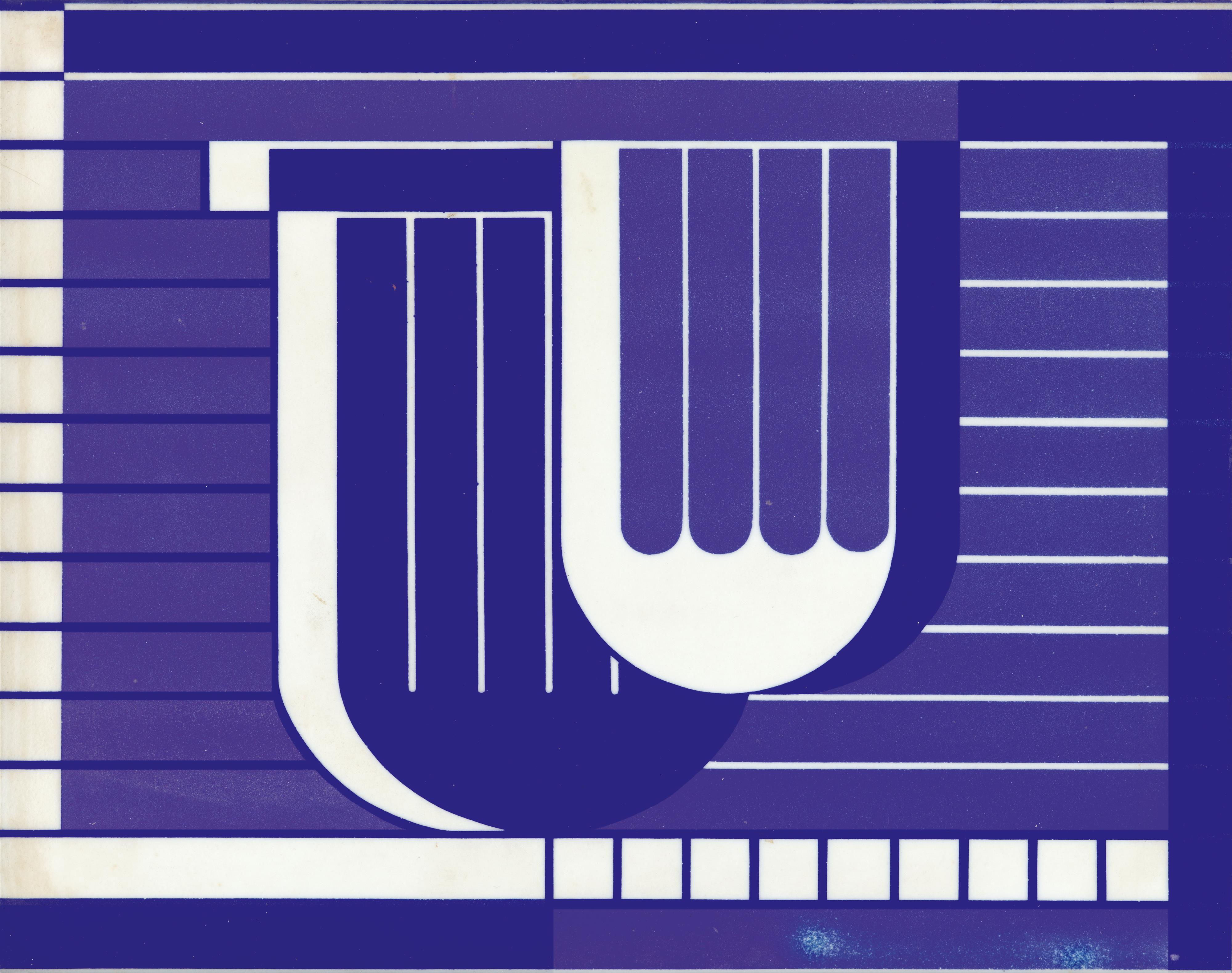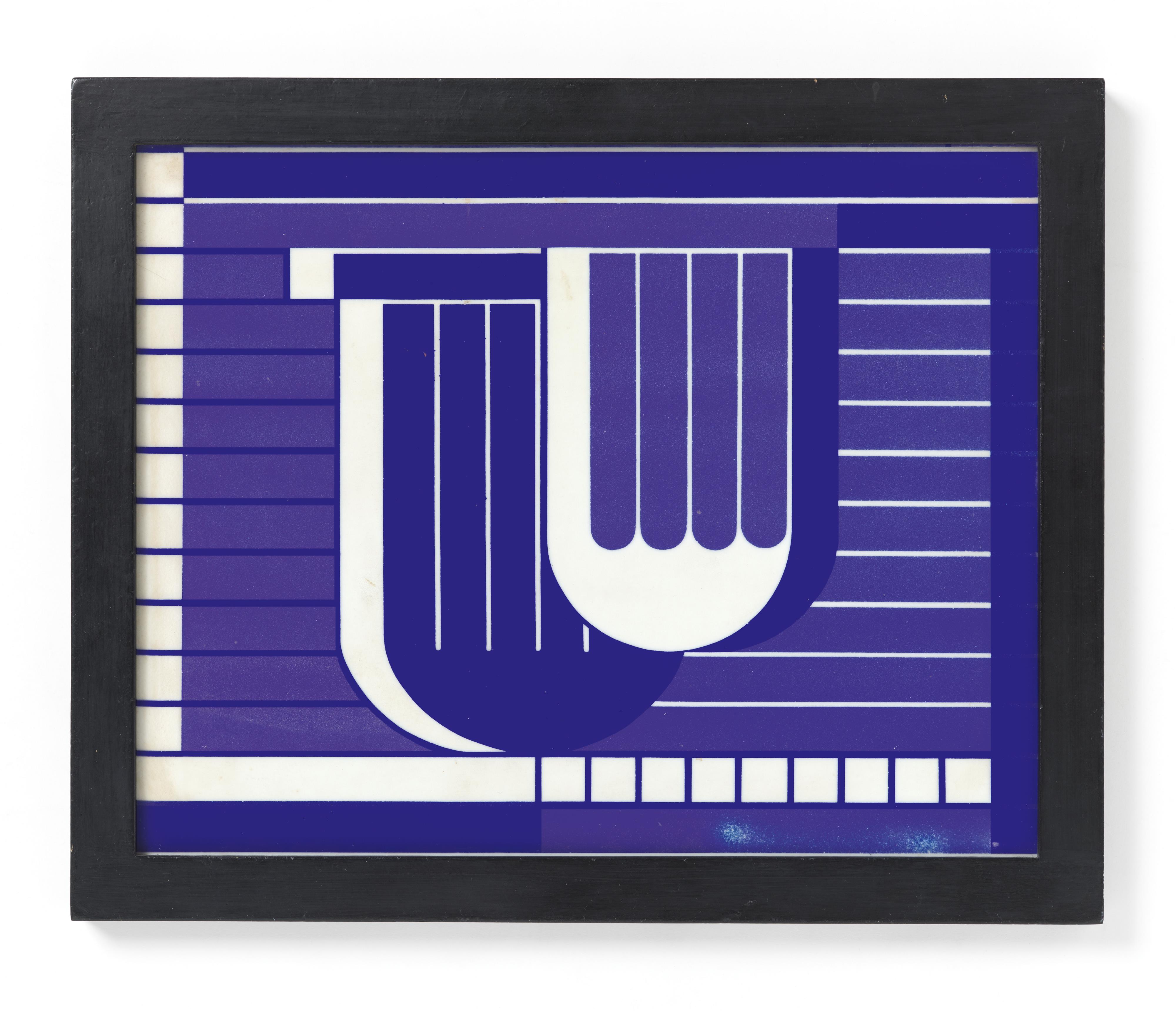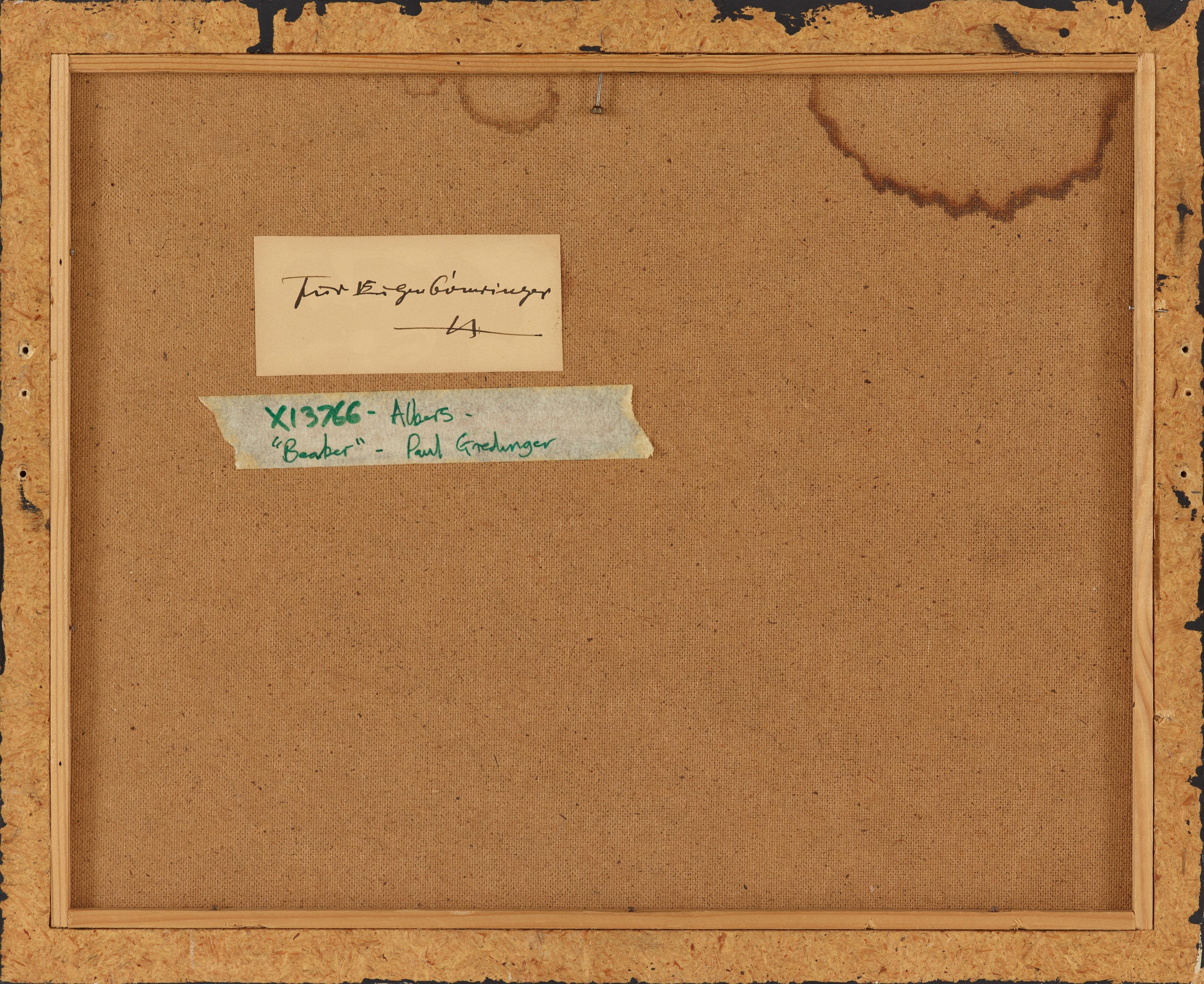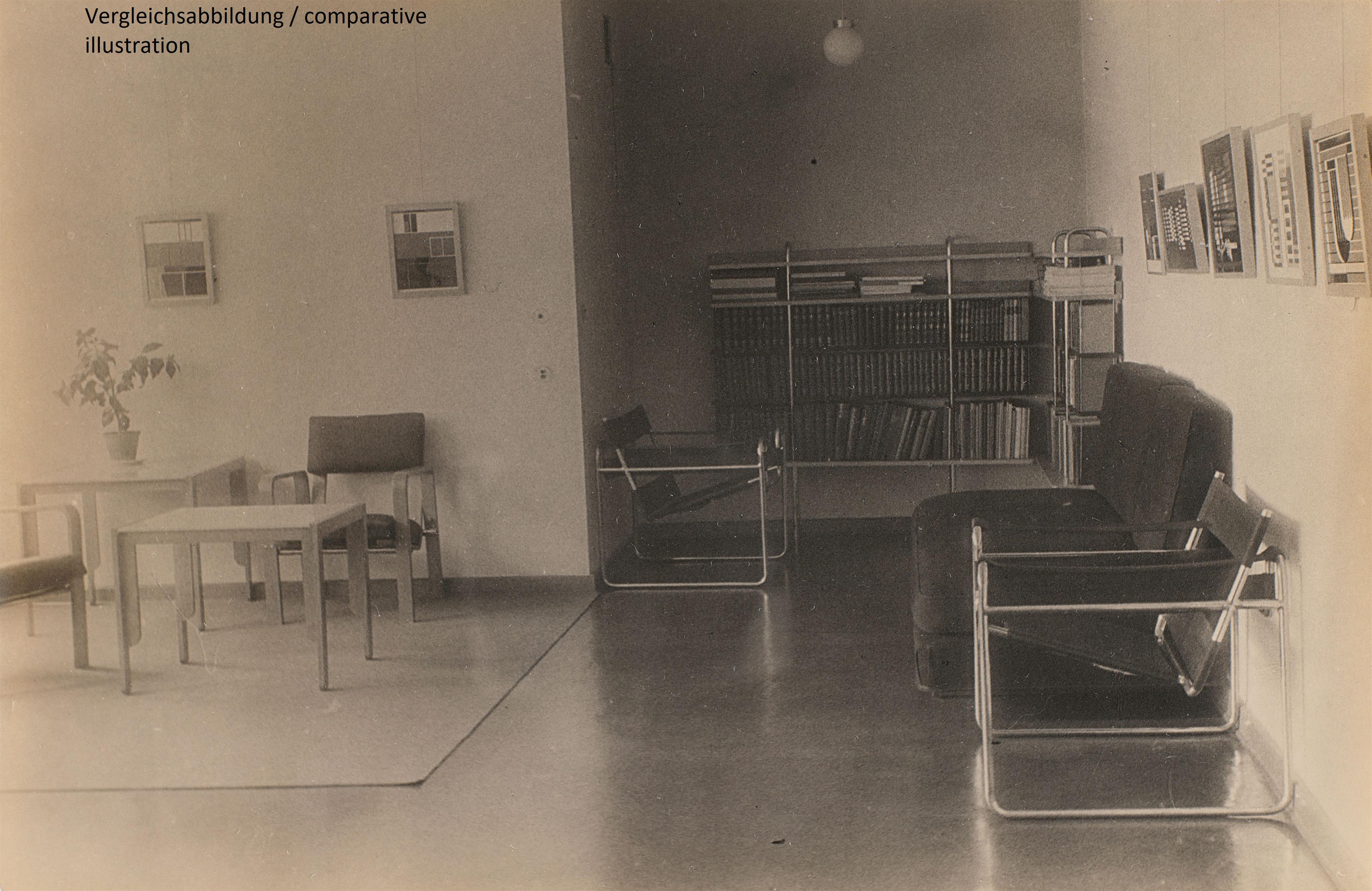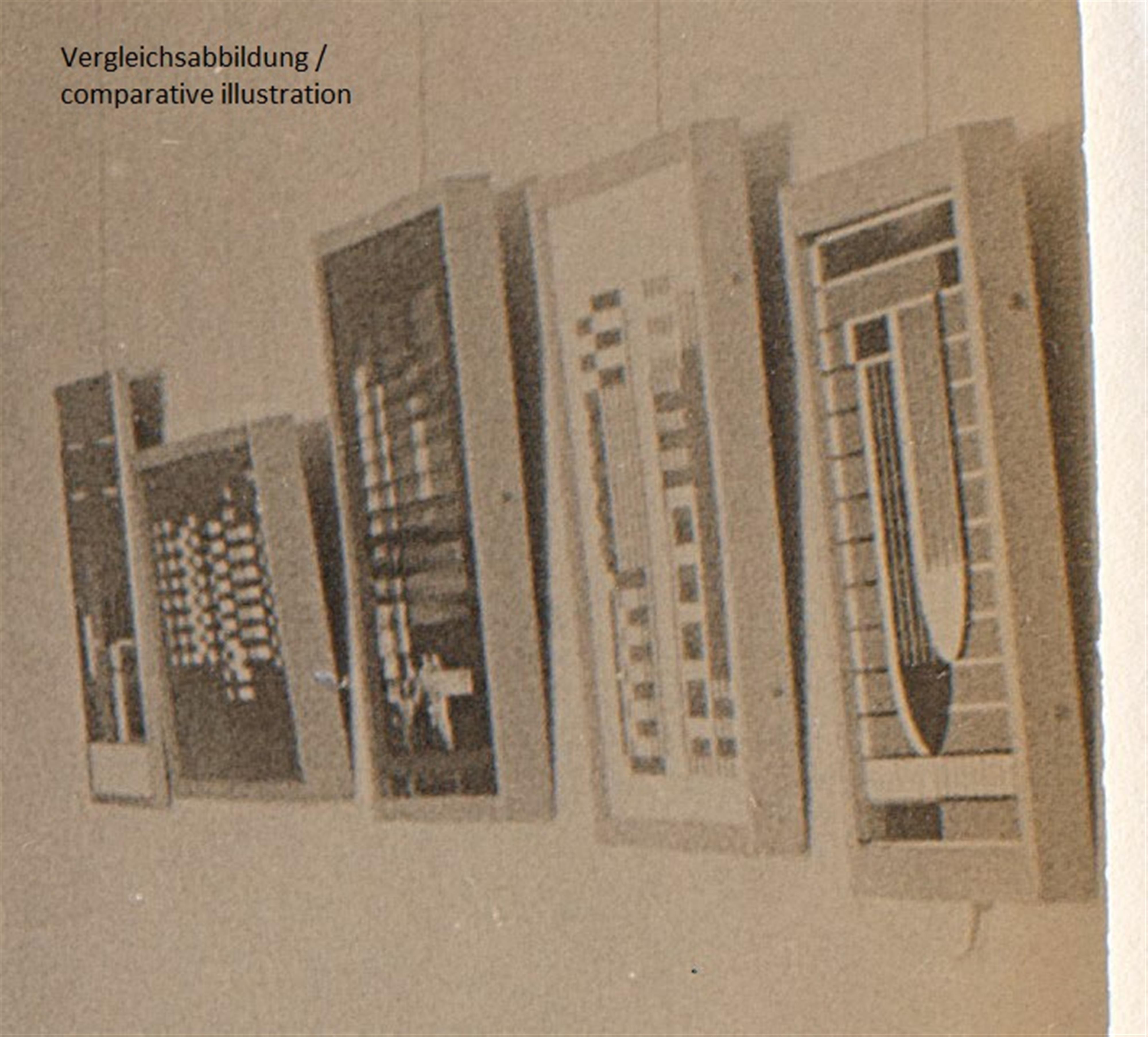Josef Albers
Beaker
1929
Sandblasted opaque flashed glass. 29 x 37 cm. Framed. Monogrammed and with dedication 'Für Eugen Gomringer JA' on paper adhesive label on back of frame verso. - Minor traces of age.
The medium of glass accompanied Josef Albers throughout his life and was the focus of his artistic oeuvre until his emigration to the USA. According to Albers, in glass staining, colour functions as direct light. Even during his childhood in a strict Catholic parental home, he was fascinated by the abundance of light in stained glass church windows. His father, a versatile master painter, taught him the technical skill of etching and staining glass as a youth. He took this foundation with him when he started studying at the Bauhaus in 1920; both aspects, the visual quality of colour and light and the appreciation of processes of craftsmanship, became determinant for his artistic work. At Bauhaus, he studied the medium of glass, teaching himself. While still an apprentice, he became a foreman in the stained-glass workshop, in 1923 he became a teacher for the compulsory preliminary course, and in 1926, he was appointed master by Walter Gropius.
Albers constantly strived to use a universal pictorial language free of subjective and emotional content in order to attain a superior cognitive expressiveness. Clarity and luminosity should dominate the art. The sandblasted glass works that he created in his Bauhaus period in Dessau from 1925 onwards met these requirements perfectly. With this innovative technique of his own devising, the artist created an entirely new type of glass staining.
For the realisation, he engages the skills of the master craftsmen of the Vereinigte Werkstätten für Mosaik und Glasmalerei Puhl & Wagner - Gottfried Heinersdorff, Berlin-Rixdorf.
A sandblasting tool was used to engrave the image prepared by stencils into opaque coloured cameo glass. By varying the duration and intensity of the sandblasting, the shiny coloured cameo glass was either entirely removed, bringing out the white frosted glass underneath, or the surface was only slightly tarnished.
‘By using opaque glass and only one pane, I have achieved the mobility of a small easel painting that can be hung on a wall or incorporated into a wall as a permanent architectural feature, indoors or out. [...] However, the unusual colour intensity, the purest white and deepest black, and the required precision and flatness of the design elements present an unusual and special material and form effect’, explains Josef Albers himself (Josef Albers, Interaction, exhib.cat. Villa Hügel, Essen 2018, p.88).
Of the sandblasting works from the late 1920’s that were defined mostly by grid structures and often additionally designed with stained multicoloured glass, the sandblasting work “Beaker” on offer here stands out due to its purist and harmonious colour and design. The cool blue and white colour contrast creates an extraordinary luminosity and crispness and brings out the curves of the stylized cup walls succinctly.
Josef Albers left this impressive stained-glass work behind in Germany when he and his wife emigrated to the USA in 1933. It was initially stored at Trunck & Co. in Berlin, the furniture workshop of Siegfried Fleischmann, Anni Albers’ father. Prior to Siegfried Fleischmann’s own emigration, it was moved in 1936-37 from Berlin to the Bottrop home of Lorenz Albers, the father of Josef Albers, together with other stored works. Following his death in 1944, the works were transferred to the Bottrop home of Elisabeth and Rudolf Marx, Albers’ sister and brother-in-law. The artist later transferred ownership to the writer Eugen Gomringer, with whom he had been friends since the mid-1950s and who, in 1968, published the extensive monograph „Josef Albers, Das Werk des Malers und Bauhausmeisters als Beitrag zur visuellen Gestaltung im 20. Jahrhundert“.
“Beaker” is the only preserved work with coloured cameo glass in the sandblasting technique that Albers otherwise only used during the period between 1929 and 1931 for works in glass in black, white, and grey.
Certificate
The present artwork is registered in The Josef Albers Foundation, Bethany, Connecticut. We would like to thank Jeannette Redensek for further information.
Provenance
Eugen Gomringer (gift from the artist, about 1955-1960); private collection, Switzerland (ca. 1960)
Literature
Irving Leonard Finkelstein, The Life and Art of Josef Albers, Ann Arbor 1979
Will Grohmann, Josef Albers, in: Museum Journal, Otterlo 1961, no. 9-10, p.212 ff., p.232f.
Exhibitions
Le Cateau-Cambrésis 2008 (Musée Matisse), Josef Albers, Vitraux, Dessins, Gravures, Typographies, Meubles, exhib.cat.no.30, p.149 with col. ill.
London 2006 (Tate Modern), Bielefeld (Kunsthalle), New York (Whitney Museum of American Art), Albers and Moholy-Nagy, From the Bauhaus to the New World, exhib.cat., p.42 with plate 53
New York 1994 (Solomon R. Guggenheim Museum), Josef Albers, Glass, Color, and Light, exhib.cat. no. 32, n.p. with col.ill.
Amsterdam 1961 (Stedelijk Museum), Josef Albers
Hagen 1957 (Karl-Ernst-Osthaus-Museum), Josef Albers, exhib.cat.no.19
Basel 1929 (Kunstgewerbemuseum), Dresden (Kunstgenossenschaft), Breslau (Sonderabteilung der Werkbundausstellung), Dessau 1929/1930 (Bauhaus), Essen 1930 (Folkwang Museum), Mannheim (Städtische Kunsthalle), Zurich (Kunsthalle und Kunstgewerbemuseum), Bauhaus Dessau, 10 Jahre Bauhaus

